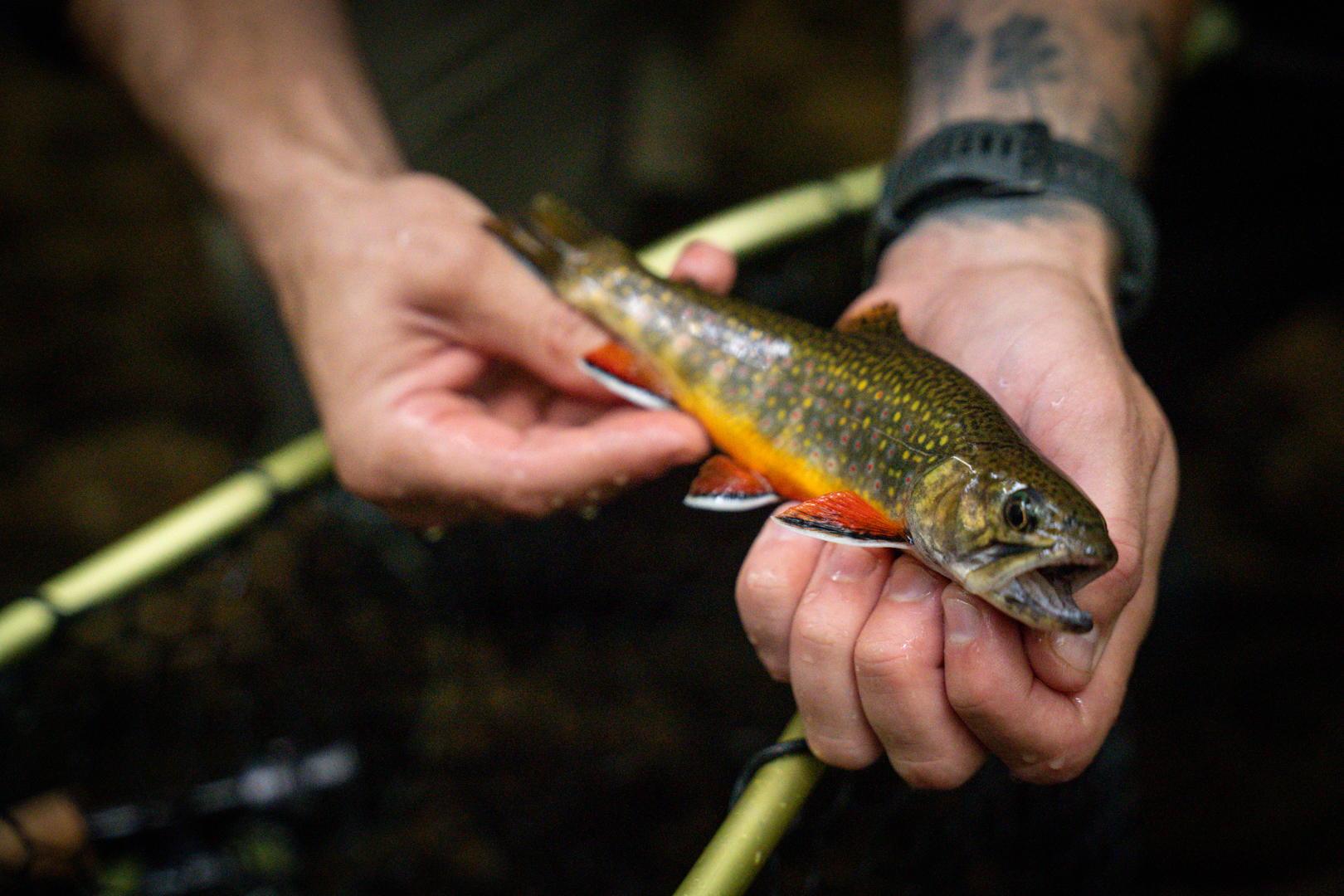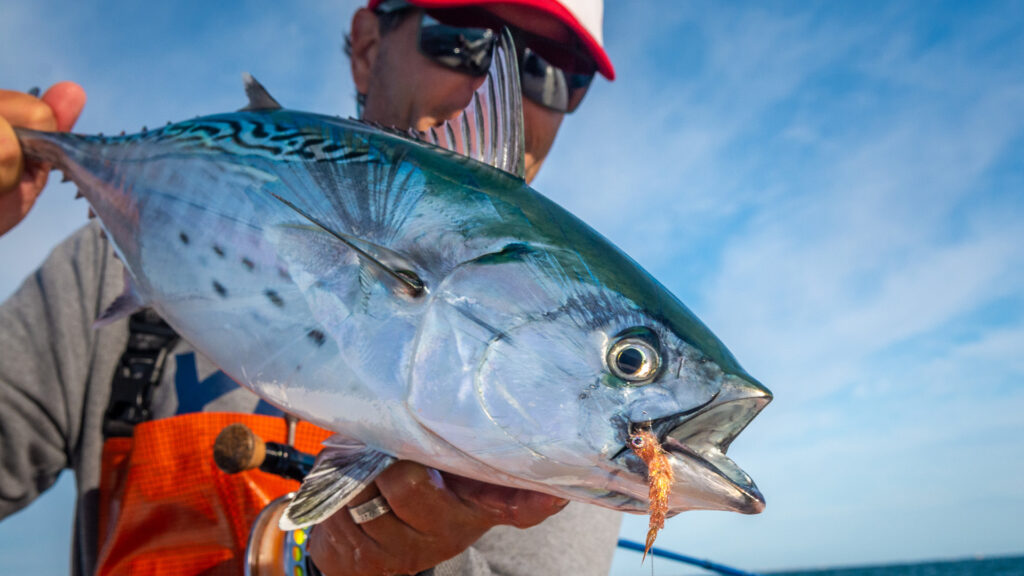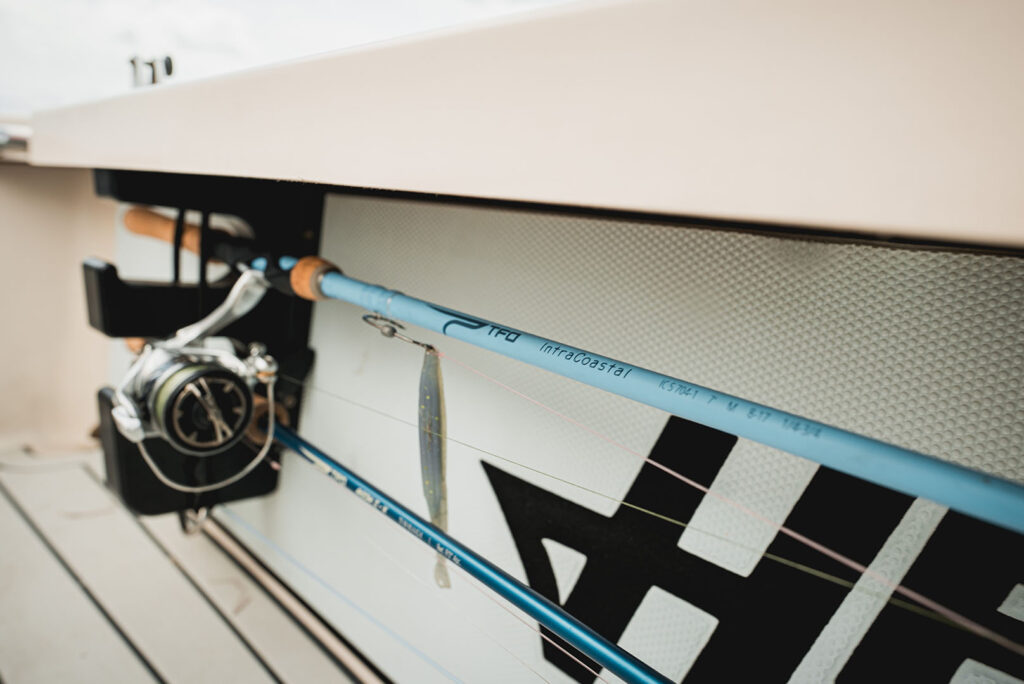Southern hospitality can entail many things. Sometimes it’s a made-from-scratch homemade meal, or maybe it’s a helping someone change a tire on the side of a two-lane highway. But sometimes, it’s sharing a special piece of water, far off the grid, where footprints from other anglers are almost nonexistent, and the fishing is so great, it reminds you of all the times you heard about the “good ole days” where fish were plentiful, and other anglers were few and far between.
It’s late September, just a few days past the Fall Equinox, and I’ve been invited to spend the day on the water with Cody Fischer, owner of East Tennessee fly shop, Tellico Outfitters, and head guide for the shop, Micah Howard.
“Keep a lid on the place we’re about to take you. If they’re on, you’re in for a treat.” says one of my trip hosts.

Tellico Outfitters owner Cody Fischer (front) and head guide, Micah Howard (right) rigging up for a backcountry brookie trip. // Photo: Tom Wetherington
Tellico Outfitters is located in downtown Tellico Plains, Tennessee, just a short drive away from the Cherokee National Forest, home of the Tellico River – the largest freestone trout stream in Tennessee, which hosts a mix of wild and stocked rainbow and brown trout. As great as the rainbow and brown trout fishing can be on the Tellico, Cody and Micah wanted to show me something more special about their region – the native Southern Appalachian Brook Trout.
Fall is a spectacular time to pursue brookies. Not only are the trees and leaves starting to show off their fall colors, but the brook trout are too as they prepare to spawn.

Blue Ribbon Appalachian Brook Trout. // Photo: Tom Wetherington
Pursuing this species isn’t for the faint of heart. Wild brook trout live in high elevation streams that often requires some serious backcountry hiking to remote streams with cold water suitable for these fish to survive and reproduce.
After a long drive, we arrived at our trailhead, but it would be almost another hour before we even made our first cast. We were geared up with the perfect rod for small stream trout fishing – the 7’6” 2wt and 8’ 3wt Blue Ribbon. Both were paired up appropriately with the NTR I and BVK SD I reel.

Cody Fischer chose to grab an 8′ 3wt Blue Ribbon and NTR I reel from the shop. // Photo: Tom Wetherington
Having a rod that can quickly deliver a fly accurately to a spot, but short enough to avoid overhanging Rhododendron branches is essential when fishing small, high elevation streams where brookies live. From long casts across deep runs, to bow and arrow casts under thick vegetation, the Blue Ribbon rod was no doubt a great stick for a full day of small stream backcountry fly fishing.

Photo: Tom Wetherington
Most of the day the brookies were keyed in on dry flies (#16 Stimulators and Neversink Caddis), but occasionally, fish were picked up on a dropper nymph tied a foot or so beneath the dry. Regardless, the fish weren’t picky, and with the low water conditions, it didn’t take long for a fish to find the fly.

Photo: Tom Wetherington
The further up the stream we went, the better the bite got. If you missed a fish on your first cast, you’d still have a second or third cast, and in in some cases, even your fifth cast.

Tellico Outfitters head guide Micah Howard releases a wild Appalachian Brook Trout caught on the 7’6″ 2wt Blue Ribbon and BVK SD I . // Photo: Tom Wetherington
What was supposed to be a half day of fishing quickly turned into a full day. “I’m just going to pop my head over this next waterfall” became the theme for the six-mile roundtrip hike.

Hooked Up // Photo: Tom Wetherington
When you’re in an area that has very few signs of any human traffic, and the fishing is nothing short of excellent, it’s extremely difficult to call it quits, and head home. Even if that means missing a family dinner or being an hour late to pick up your wife from work – sometimes the risk is worth the reward.

Salvelinus fontinalis – the Southern Appalachian brook trout // Photo: Tom Wetherington
Pro Tip #1 – Don’t schedule anything else when doing a backcountry trip for brook trout. Especially if you know the fishing is going to be good.
Pro Tip #2 – Skip leg day at the gym when your buddy tells you he wants to go brookie fishing that weekend.
Blog and photos by TFO Social Media & Online Community Manager, Tom Wetherington.
![]()






